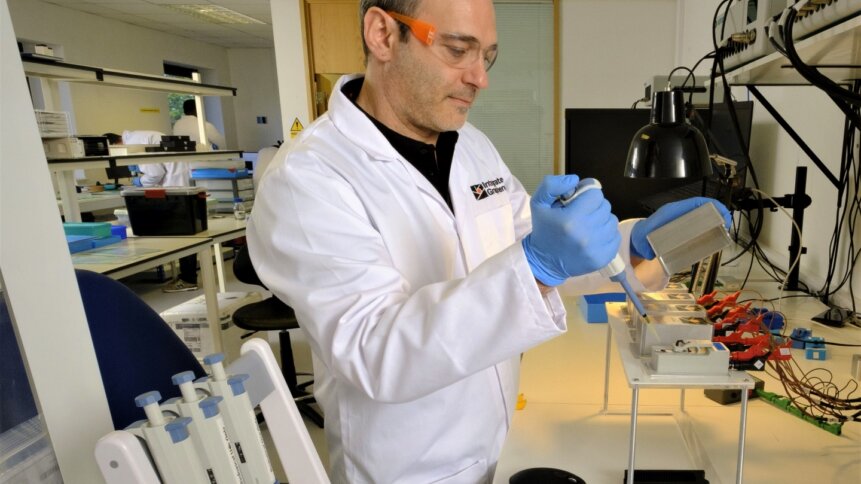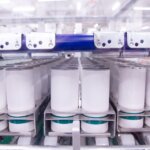
There’s no shortage of applications for graphene – the 2D wonder material that has long been the darling of the nanotechnology world. Adding to the list, which includes applications in building better batteries and supercapacitors, are opportunities in medtech and diagnostics. This month, Integrated Graphene announced that it had teamed up with scientists at the nearby University of Edinburgh, UK, to explore biosensing opportunities that could improve the success of liver transplants.
Expanded opportunity
Integrated Graphene, a manufacturer of graphene foam that can be grown on any surface in seconds, is using its technology to provide assay developers with an innovative electrochemically active substrate. Thanks to the materials properties of this 98% pure carbon surface, the graphene foam is able to support a variety of biosensing methods.
“The beauty of the technology is that it can be scaled and reproduced quickly, at very low cost, with no drop-off in performance,” said Claus Marquordt, CEO and co-founder of Integrated Graphene. Marquordt and his colleagues are engaging with sensor developers to address a range of use cases from assuring food safety to point-of-care diagnostics.
As part of the University of Edinburgh project – which also involves transplant surgeons not just in Scotland, but also in Austria and Italy, and is dubbed ‘sensiBile’ – researchers will use the Integrated graphene platform (referred to as ‘Gii-Sens’) to develop a test for better determining liver transplant viability. Currently, a lack of diagnostic tools can mean that donor livers are declined in scenarios where surgeons cannot accurately assess the quality and transplant suitability of the liver.
Practical advice
The goal is to come up with a quick and easy-to-deploy test that delivers a rapid ‘high risk/low risk liver’ message to users. “By assessing which donor livers have high probability of biliary complications development, we aim to provide the surgeons with the necessary information to make informed decisions,” explained Sofia Ferreira-Gonzalez, who leads the SensiBile project.
Interest in the ability of graphene to support biosensing has been strong for some time. Medical applications have been central to the Graphene Flagship – a decade-long, big budget European Union funding effort to translate the materials benefits of tiny, super-strong, and super-conductive carbon lattices into real-world applications. Examples of the ideas that have gained traction include ‘CHEMsens’ – a project led by researchers in France that resulted in prototype wearable electronic plasters capable of detecting biological data on human skin. Based on functionalized graphene, the design monitored biophysical stress by looking at markers such as sodium, potassium, lactic acid, and glucose.
Another wearable solution is a smart patch developed by Grapheal, another spinout from the Graphene Flagship. Wirelessly connected to a smartphone, the graphene-enabled tech allows remote wound-monitoring. In July, Grapheal, based in France, announced that it had partnered with graphene producer Graphenea, which has sites in Spain and the US, to launch a diagnostic platform dubbed ‘GraphLAB’ with the goal of supporting a new generation of assays for disease screening and protein detection.
Other commercialization efforts include INBRAIN, which received a EURO 1 million investment in 2020 from Sabadell Asabys, Alta Life Sciences, ICF and Finaves. The Spanish company develops novel graphene-based implants that could help to optimise the treatment of brain disorders such as Parkinson’s and epilepsy. INBRAIN’s CEO, Carolina Aguilar, points out that the application of novel 2D materials represents a real opportunity to understand how the brain works, as well as aid in the formulation of personalized treatments. The potential benefits of the technology have helped to attract some big partnerships.
Brain gain
In 2021, INBRAIN subsiduary INNERVIA Bioelectronics announced a collaboration with Merck, Germany, a leading science and technology company. Explaining the motivation behind the move, Merck’s Chief Science and Technology Officer, Laura Matz, explained that the agreement gives her company, “access to a unique technology that increases energy efficiency in neurostimulators and could therefore become a true enabler for digital personalized treatment of patients suffering from severe and chronic diseases such as inflammatory disorders.”
According to the team, graphene brings capabilities for miniaturization, precision, and high modulation efficiency in the vagus nerve – the longest of the cranial nerves, which runs from the brain, through the face, and chest, to the abdomen. In early work, toxicity tests revealed that graphene-based sensors have advantages over materials currently in use such as platinum and iridium.
And this is by no means the end of the applications list. Make sure to bookmark TechHQ to keep on top of the latest in graphene as well as other developments in the world of medtech.









